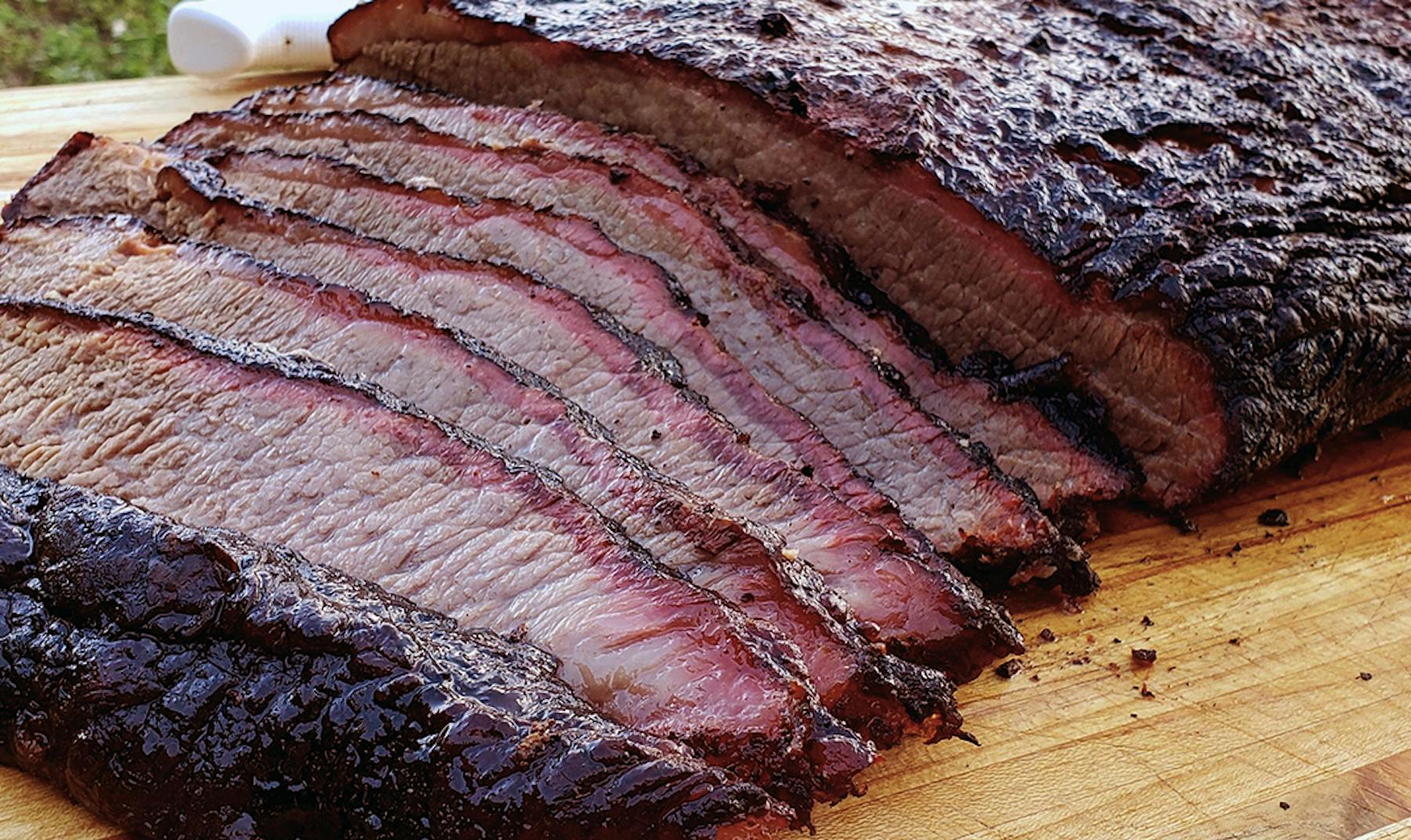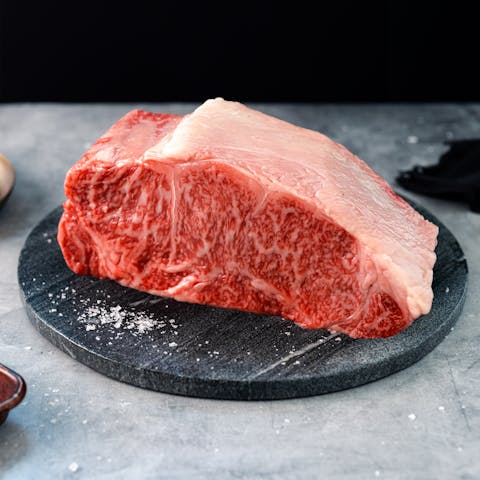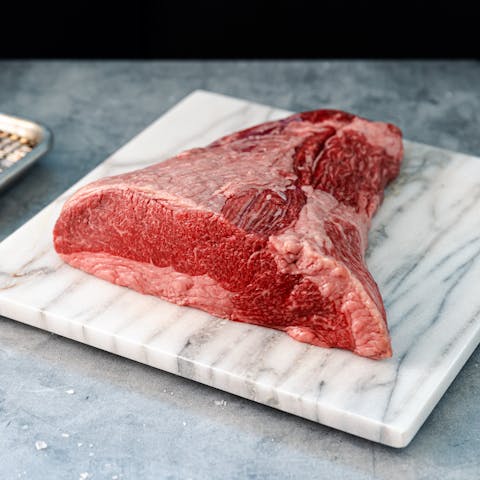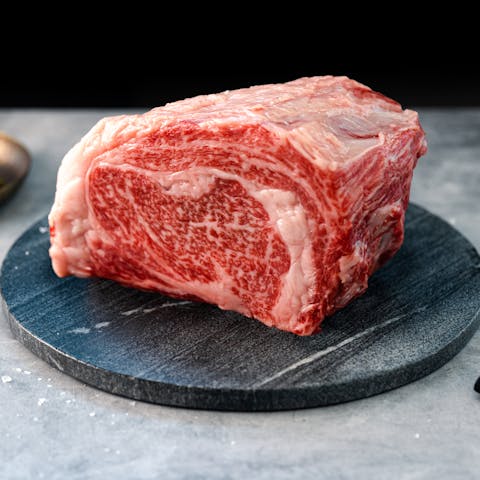How or why is a Japanese A5 Wagyu Brisket different from other brisket that I may have had before?
There’s a lot of confusion and misinformation about what is or isn’t “authentic” wagyu. We’ve written about Myths & Facts on Japanese Wagyu, and have gone to Japan ourselves to visit some of the farms that we source our wagyu from. Speaking more specifically about Japanese Wagyu Brisket, what you’ll find is something other-worldly compared to any brisket you’ve ever had before.
We talked to some brisket “experts” who said you couldn’t smoke an A5 Wagyu brisket because it was too fatty. We politely disagree because we tried it ourselves more than once and many of us proclaimed it to be the most delicious bite of beef we’ve ever eaten. Yes, it’s unapologetically rich, but it’s delicious, and you can eat a lot more brisket than you could eat A5 wagyu steak, because brisket is leaner than something like say an A5 Wagyu Ribeye. It’s so much more tender than American brisket that it’s almost creamy.
Why is it so rare and impossible to find Japanese A5 Wagyu Brisket?
There is an annual quota on imports of Japanese Wagyu to the US, and the amount (based on weight) is very small and hasn’t been increased in several years. At the same time, word has gotten out and more and more people are interested in getting their hands on some. This incentivizes importers to only bring in the most expensive cuts for which consumers will pay the most, which in the US means the center cuts (i.e., those from the Striploin, Ribloin and Tenderloin). In addition to this, in Japanese culture, and Asian cultures more generally, there’s a greater demand and appetite for brisket and non-center-cuts. This means that Japanese Wagyu producers typically make more money selling brisket to more local markets, where it’s almost never smoked, but instead usually sliced very thinly and used in a variety of other dishes and applications.
If it’s so rare, how many do you have? Should I be worried about it selling out?
Our supplies are limited, and if you really want one, we strongly encourage you to be on crowdcow.com when our event launches. If (when?) they sell out, we plan to take reservations in advance for the next shipment that we receive.
How much will the Japanese A5 Wagyu Briskets cost?
Pricing will be made public when briskets go on sale, September 14th.
How big are the Japanese A5 Wagyu Briskets?
The full, untrimmed packers briskets weigh between 25 and 34 pounds. Our “half packer briskets” are briskets that have been cut length-wise so that you still get the point and flat sections, and these weigh 13-18 pounds each, and are no longer than 24 inches. A 30 pound, untrimmed brisket is about 30 inches long.
Why are they so big? Aren’t most packer briskets in the 12-18 pound range?
There’s two reasons for the disparity in size between these briskets and what you’re probably used to seeing.
First, and most importantly, is that in America, there’s a uniform spec for how a steer is broken down, and the rib and plate are always separated from the chuck and brisket with a cut between the 5th and 6th rib. Meanwhile, in Japan, they’re typically seam-cutting, following the muscles of the animal and trying to extract them mostly intact. What that means is that these Japanese Wagyu Briskets, which consist of basically the entire deep-pectoral and superficial-pectoral muscles, extend into what in America would be the “plate” and “chuck” sections. You get more meat: a little more “flat” (the part that extends into the plate) and a lot more “point” the neck muscles extending into the chuck section.
The second reason these briskets are so large is that Japanese Wagyu cattle are finished out longer, to an age of 30-36 months, whereas most American steers are only finished out to an age that’s maybe half that.
How much should I expect a Japanese Wagyu Brisket to weigh after trimming?
That depends on how you trim it. In our experience with several test briskets, we saw about 30% yield loss in the trimming process. Most of that “loss” is fat that could be rendered to A5 Wagyu Tallow (aka “liquid gold”) or even meat that would be perfectly good cooked other ways.
If you watched our Steve Raichlen video on “How to trim an A5 Wagyu Brisket”, we’d actually suggest not trimming it quite that much, in particular not removing all of the neck meat on the point/deckle, which we found to be perfectly smokable and delicious in our tests. If you do choose to remove that delicious extra meat from the point, it would result in a yield loss of 40% or more.
Our “Half Packer Briskets” are partially trimmed down to roughly a 1” fat cap and are no longer than 24 inches. Expect less trim or yield loss from these.
How long will the brisket take to thaw? How should I thaw it?
Do not thaw your Japanese Wagyu Brisket on the counter at room temperature. We repeat, do not thaw it on the counter at room temperature. Seriously, do not thaw it on the counter at room temperature. Why? Because legit Japanese Wagyu fat (the fat in these briskets) melts at room temperature, so you want to thaw this in the refrigerator so that it doesn’t melt everywhere. The rule of thumb is a day for every 5-6 pounds. The briskets we tested were all about 30 pounds and took 5 days to thaw.
How should I smoke a Japanese Wagyu Brisket? Does it come with cooking instructions?






